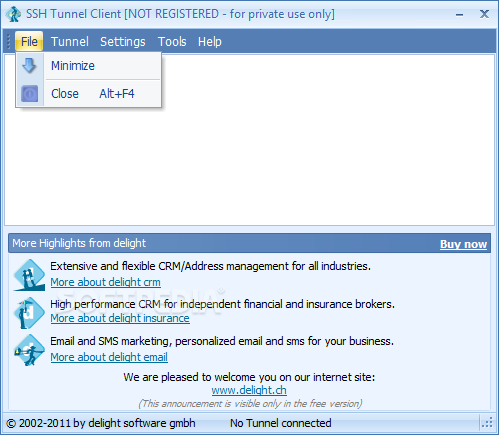

The proxy then makes a TCP connection to a particular server:port, and relays data between that server:port and the client connection. A client issues the HTTP CONNECT command to an HTTP proxy. If the firewall policy does not specifically exclude this kind of "wrapping", this trick can function to get around the intended firewall policy (or any set of interlocked firewall policies).Īnother HTTP-based tunneling method uses the HTTP CONNECT method/command. Users can also use tunneling to "sneak through" a firewall, using a protocol that the firewall would normally block, but "wrapped" inside a protocol that the firewall does not block, such as HTTP.

Typically, the delivery protocol operates at an equal or higher level in the layered model than the payload protocol.Ī tunneling protocol may, for example, allow a foreign protocol to run over a network that does not support that particular protocol, such as running IPv6 over IPv4.Īnother important use is to provide services that are impractical or unsafe to be offered using only the underlying network services, such as providing a corporate network address to a remote user whose physical network address is not part of the corporate network. Tunneling uses a layered protocol model such as those of the OSI or TCP/IP protocol suite, but usually violates the layering when using the payload to carry a service not normally provided by the network. The tunneling protocol works by using the data portion of a packet (the payload) to carry the packets that actually provide the service.

It involves allowing private network communications to be sent across a public network (such as the Internet) through a process called encapsulation.īecause tunneling involves repackaging the traffic data into a different form, perhaps with encryption as standard, it can hide the nature of the traffic that is run through a tunnel. In computer networks, a tunneling protocol is a communication protocol which allows for the movement of data from one network to another.


 0 kommentar(er)
0 kommentar(er)
